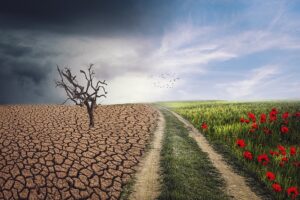As the planet undergoes unprecedented environmental shifts, the impacts of climate change have become increasingly evident across the globe. In this changing landscape, the insurance industry plays a critical role in assessing risks, adapting strategies, and fostering resilience against the challenges posed by climate change. For example, as a pet owner, your medium sized dogs will be the most excited to explore nature and go on walks. However, as temperatures continue to rise and extreme weather events become more frequent, it’s important for pet owners to consider how these changes may impact their pets’ health and well-being. Let’s explore the intricate relationship between climate change and insurance, understanding the risks and strategies for adaptation in this evolving environment.
Understanding Climate Change Risks
 Climate change poses a wide range of risks, from extreme weather events to rising sea levels and changes in disease patterns. These risks can have severe consequences for individuals, businesses, and entire communities. For the insurance industry, these risks translate into increased payouts as losses due to natural disasters and other climate-related events continue to rise. This has put immense pressure on insurers to reassess their risk assessments and find ways to adapt to the changing climate.
Climate change poses a wide range of risks, from extreme weather events to rising sea levels and changes in disease patterns. These risks can have severe consequences for individuals, businesses, and entire communities. For the insurance industry, these risks translate into increased payouts as losses due to natural disasters and other climate-related events continue to rise. This has put immense pressure on insurers to reassess their risk assessments and find ways to adapt to the changing climate.
Adapting Insurance Strategies
To navigate the risks of climate change, insurance companies are increasingly turning towards innovative strategies. These strategies include incorporating data from climate models into risk assessments, developing new products that cater specifically to climate-related risks, and encouraging sustainable practices to mitigate future losses. Insurers are also investing in technology to better understand and predict the impact of climate change on their business models.
Fostering Resilience
While insurance companies play a crucial role in mitigating risks and adapting strategies, fostering resilience against the impacts of climate change is a collective effort that requires collaboration between governments, businesses, and individuals. Governments can play a key role in promoting sustainable practices through policies and regulations. Businesses can implement climate-friendly practices to reduce their own risks, while individuals can take steps to protect their homes and properties against potential damages.
The Importance of Continued Adaptation
As climate change continues to transform our world, it is essential for insurance companies and other stakeholders to continuously adapt their strategies. This may involve incorporating new data and technologies, reassessing risk assessments, and developing innovative products that cater to emerging risks. By staying proactive and continually adapting, the insurance industry can better protect individuals and businesses against the impacts of climate change.
In Conclusion
 Climate change poses unprecedented challenges to the insurance industry, but it also presents an opportunity for innovative solutions and collaborative efforts. By acknowledging the risks, implementing adaptive strategies, and fostering resilience, insurers can play a pivotal role in safeguarding communities and businesses in the face of a rapidly changing environment. Embracing sustainable practices, leveraging data-driven insights, and promoting a culture of resilience are key steps towards a future where insurance becomes a pillar of strength against the impacts of climate change.
Climate change poses unprecedented challenges to the insurance industry, but it also presents an opportunity for innovative solutions and collaborative efforts. By acknowledging the risks, implementing adaptive strategies, and fostering resilience, insurers can play a pivotal role in safeguarding communities and businesses in the face of a rapidly changing environment. Embracing sustainable practices, leveraging data-driven insights, and promoting a culture of resilience are key steps towards a future where insurance becomes a pillar of strength against the impacts of climate change.

